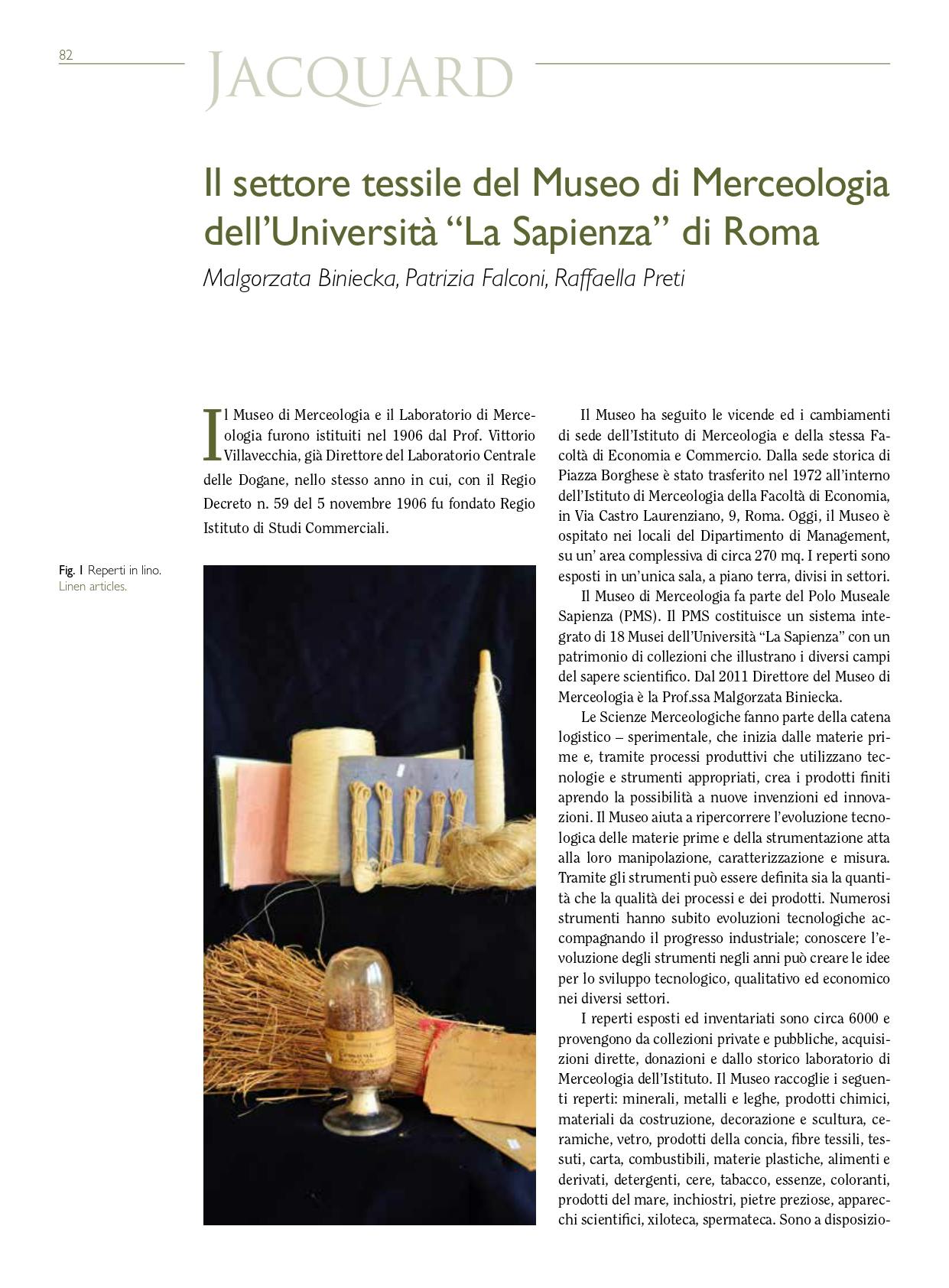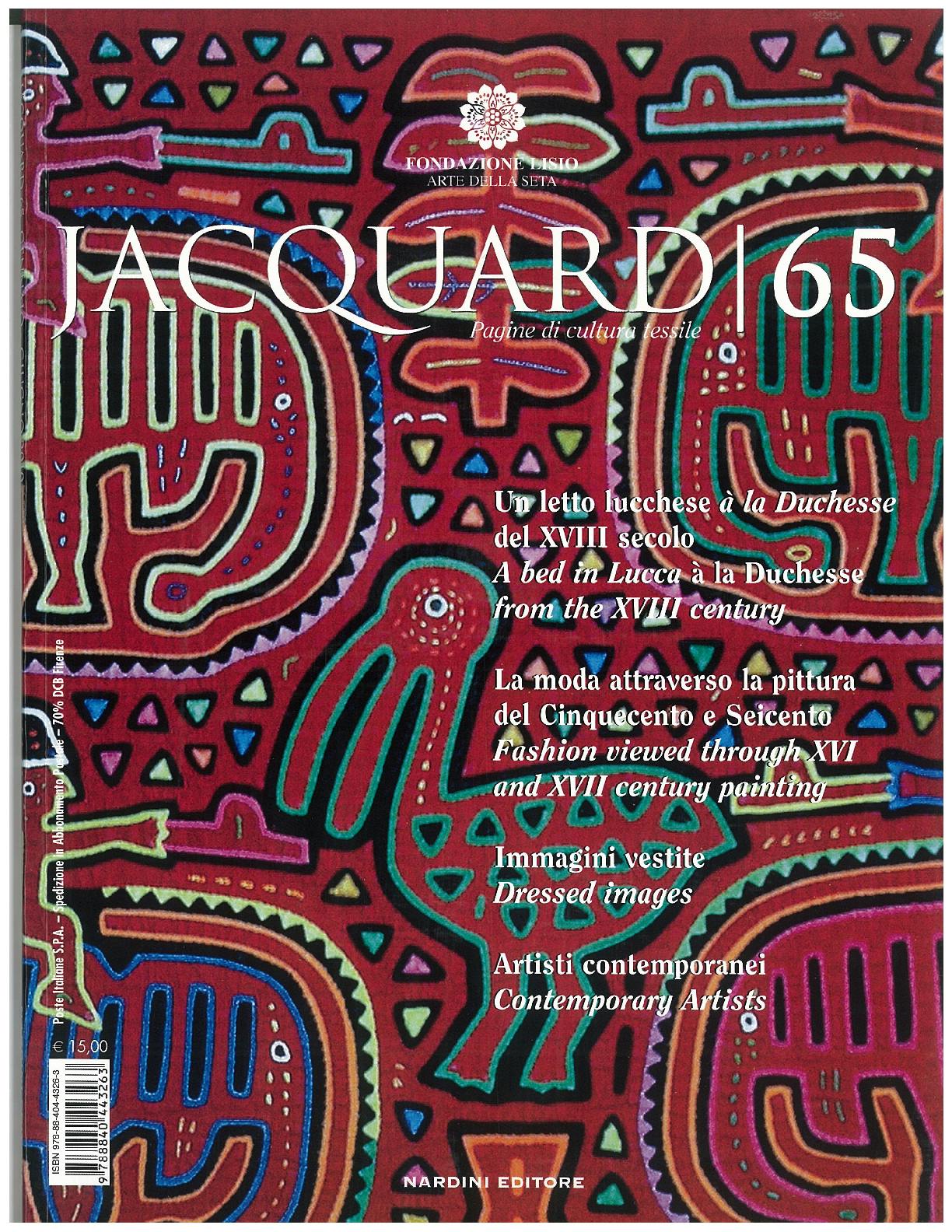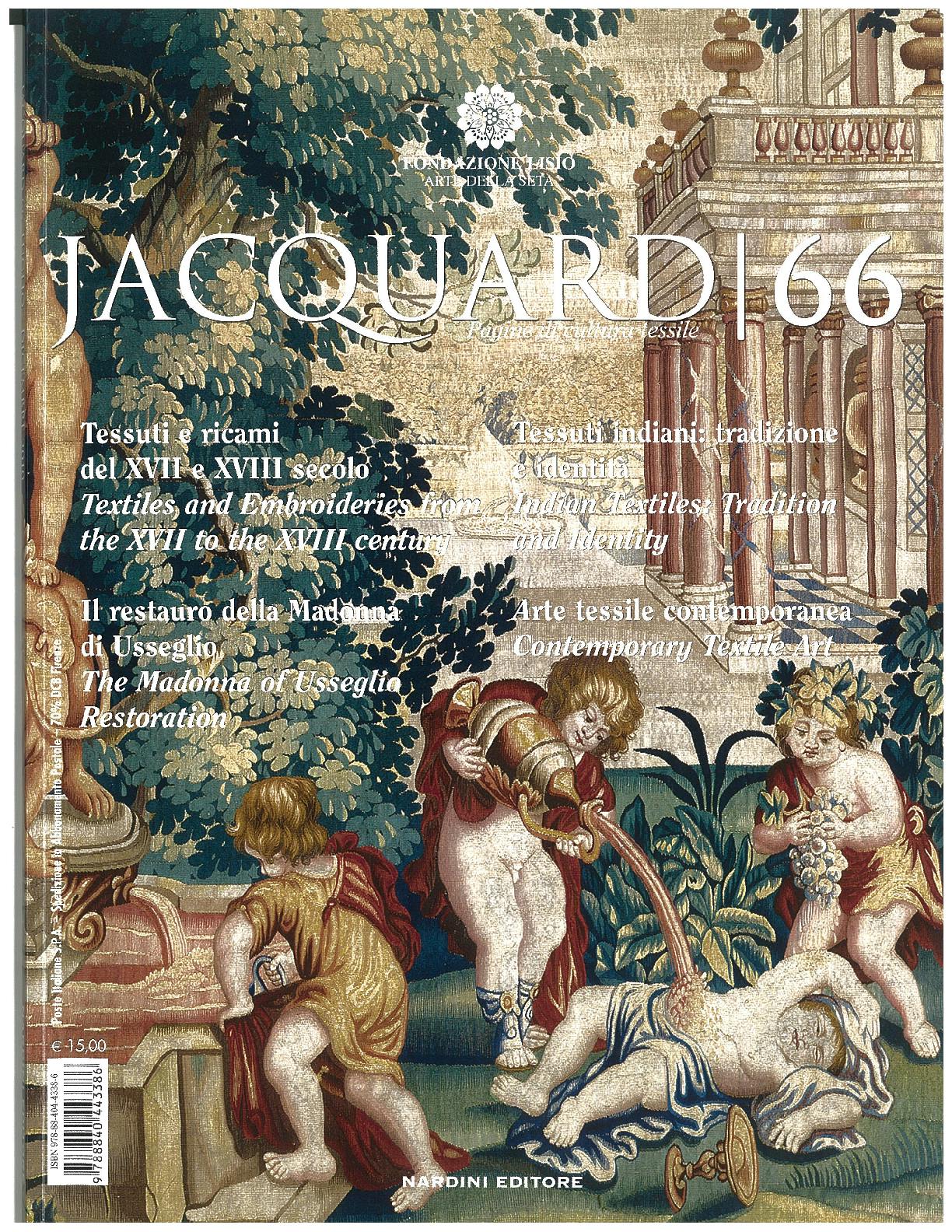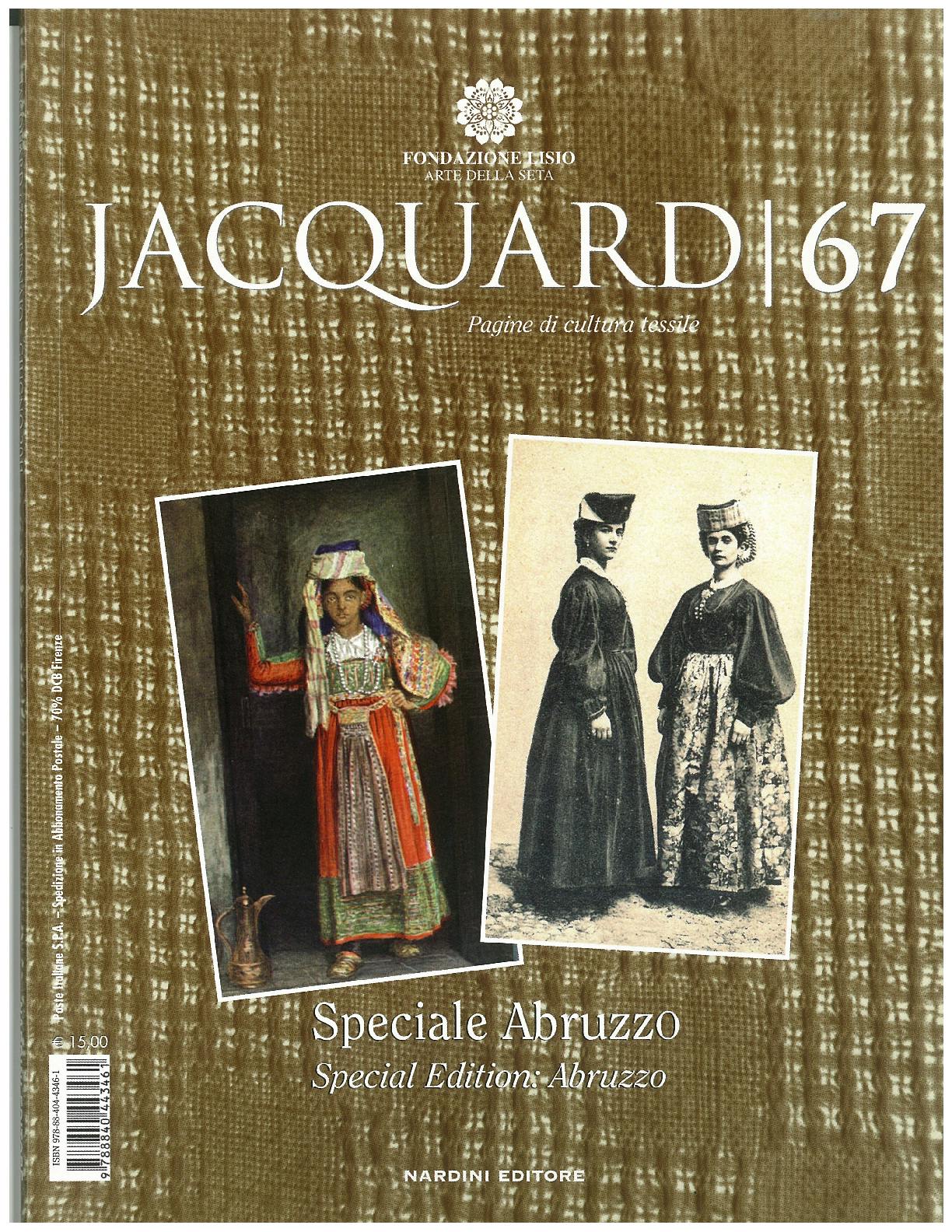First issue of the year 2018, January - June
Jacquard N°81
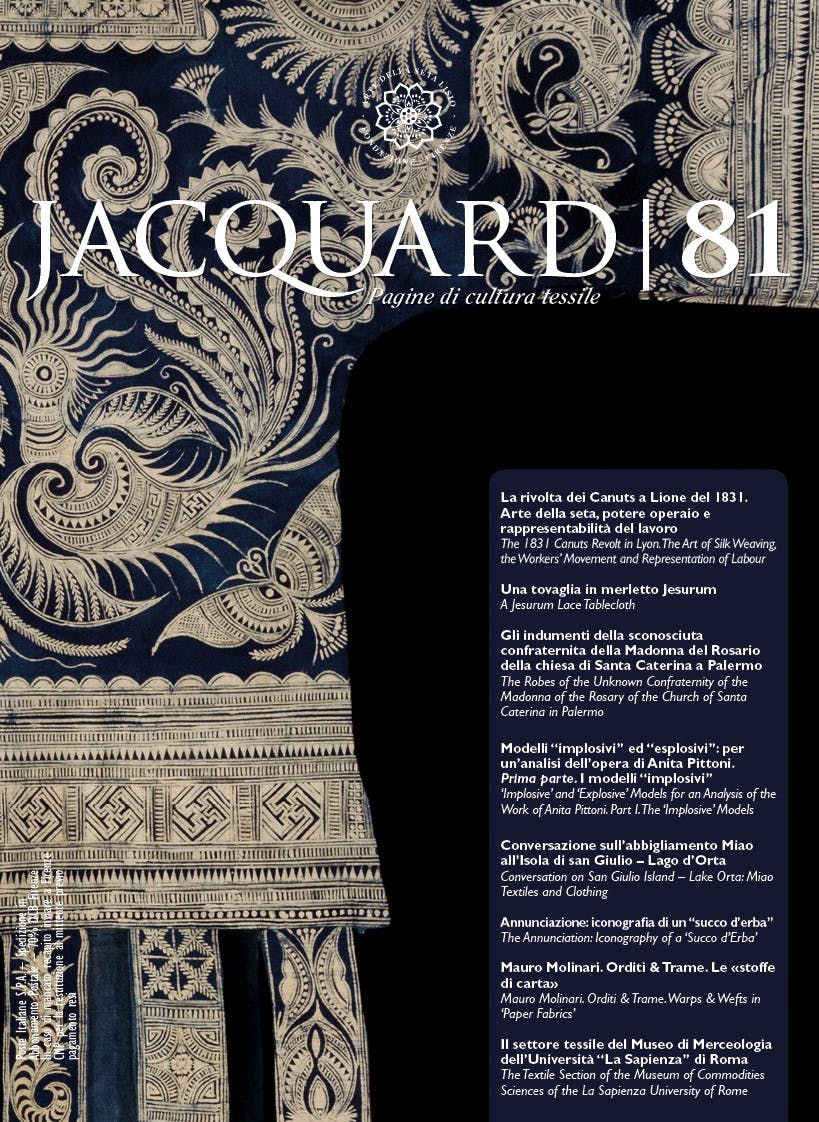
Jacquard Issue 81
An important essay dealing with the revolt of the Canuts in Lyon 1831 opens an issue rich in contributions of all types. At the centre of this study, the Canuts, the Lyonnais weavers who made their city an extraordinary centre of textile production following the stimulus provided by Louis XI and with inputs from Florence’s renowned master weavers; a city that became a production model with organisational, technical, technological and artistic/creative characteristics of international importance. The revolt marked the turning point in awareness and affirmation of workers’ rights.
A luxurious tablecloth in Venetian lace, fabricated by Jesurum, and its chequered history of acquisitions – but above all its exceptional workmanship – takes us southward to the world of the lacemakers of the lagoon and illustrates their ability to render complex subjects and compositions in thread.
From Venice we go south again to Sicily, where Palermo’s church of Santa Caterina d’Alessandria conserves precious liturgical vestments and a nucleus of robes belonging to a confraternity, unknown even to local historians, dedicated to Our Lady of the Rosary.
From these 19th-century exemplars we then turn to examination of the 20th-century works of Anita Pittoni, who created fabrics and fashions from 1927 to 1948, in the style of the period, seconding the needs and the rhythms of daily life. In this first section of the study we will be seeing her ‘implosive’ models; that is, works in which she looks to the past, as did so many of the historically-inspired developments in other areas of the applied arts in that era.
And our journey continues to China, for a look at the sumptuous garments created by the Miao people, clothing marked by its strong and strongly contrasting colours, by juxtapositions of different yarns and materials and by precious embroideries needled by ‘universal’ techniques.
Then a ‘jump’ back to the West, to view an Annunciation painted on a ‘succo d’erba’, a particular type of canvas in linen or cotton painted with colourants derived exclusively from plants; works that recall tapestries but are to all effects a genre apart.
More painting, but this time in watercolours on paper with artist Mauro Molinari’s totally modern take on decorative motifs used on ancient cloth of gold silk fabrics. And finally, we close this issue with a visit – one it would certainly be worthwhile to repeat in person – to the Museum of Commodities Sciences of Rome’s La Sapienza University, where extensive collections illustrate the technological evolution of raw materials and the instrumentation used to manipulate, characterise and measure materials and products.
Articles
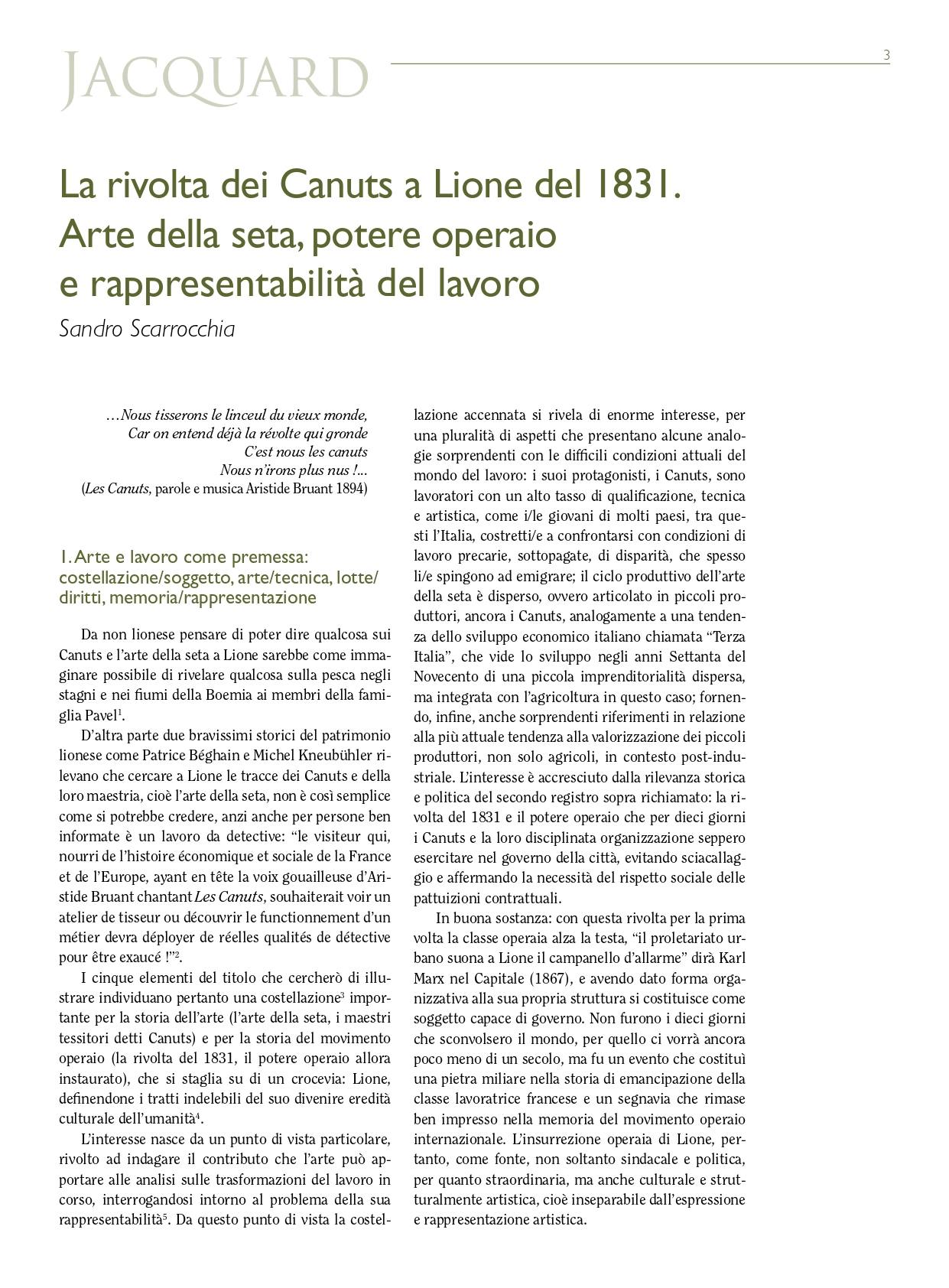
The 1831 Canuts Revolt in Lyon. The Art of Silk Weaving, the Workers’ Movement and Representation of Labour
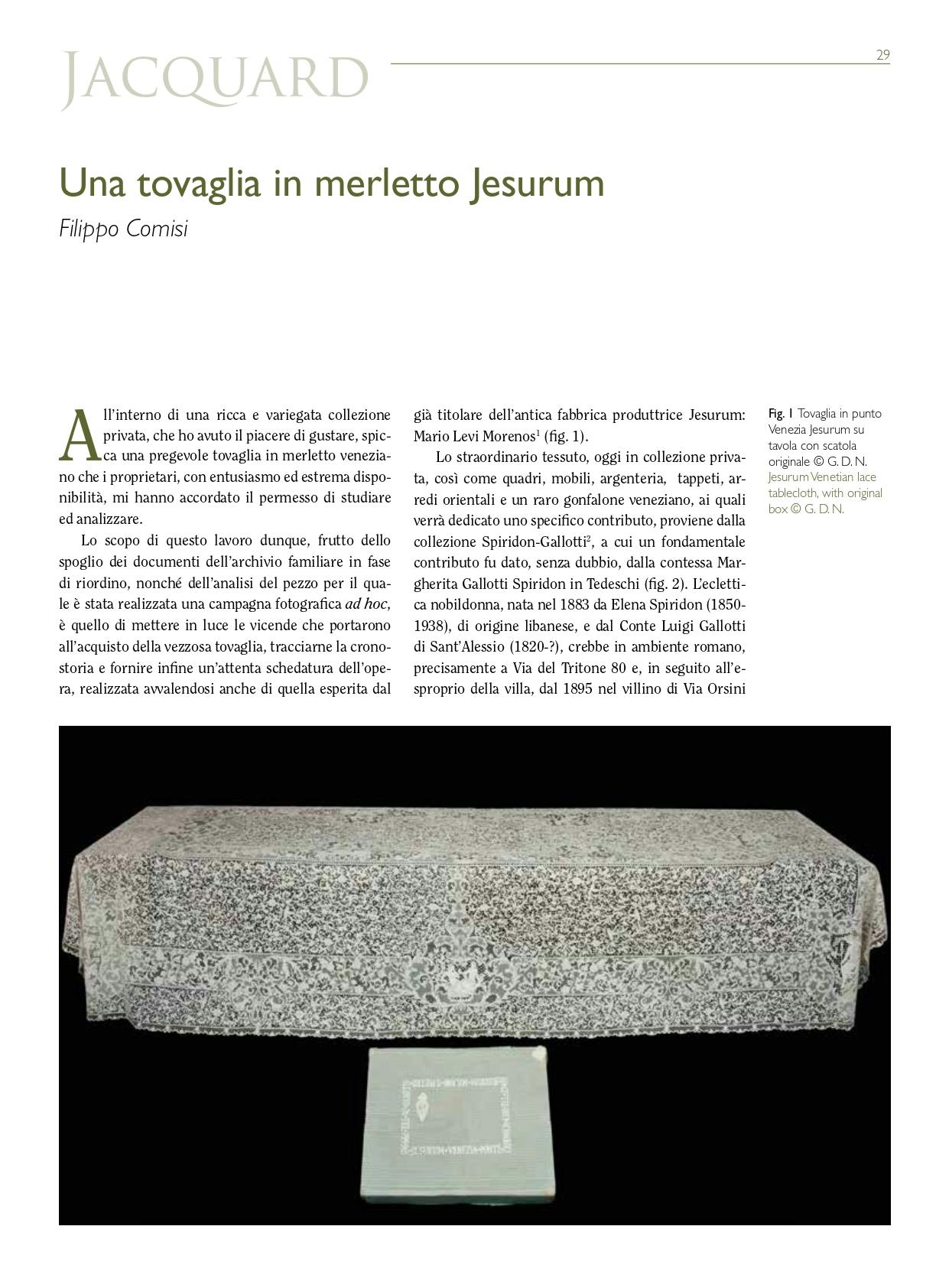
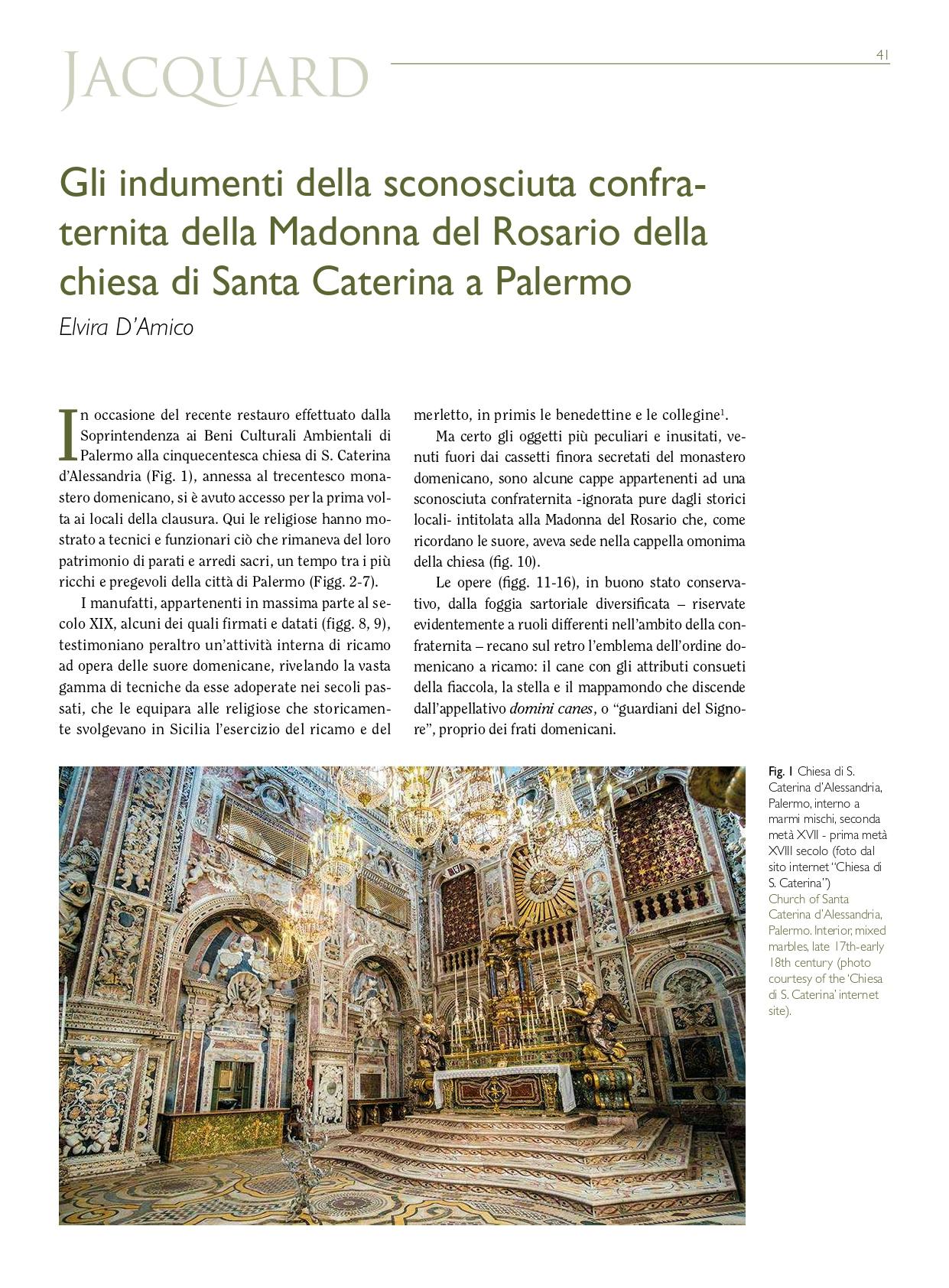
The Robes of the Unknown Confraternity of the Madonna of the Rosary of the Church of Santa Caterina in Palermo
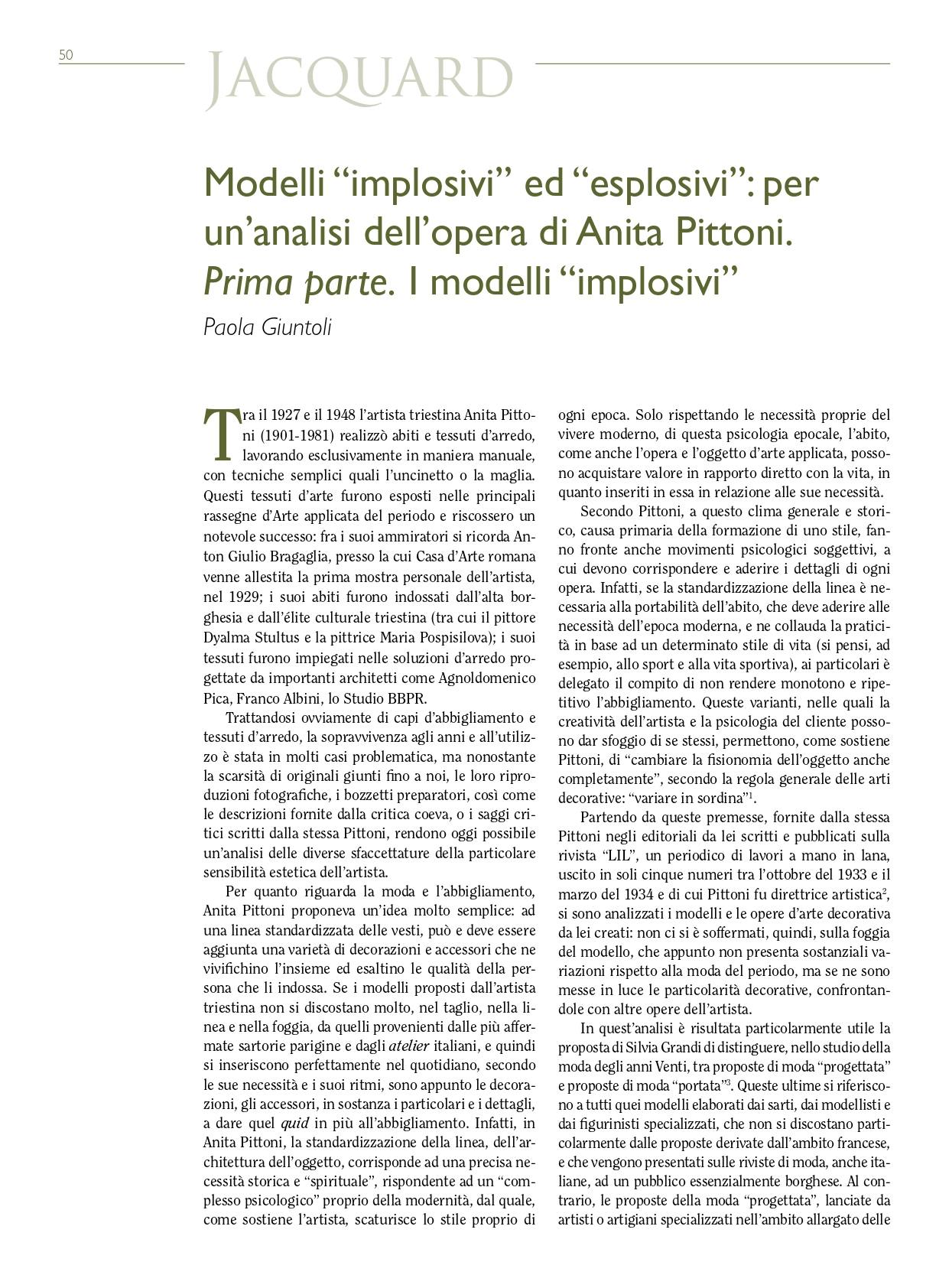
‘Implosive’ and ‘Explosive’ Models for an Analysis of the Work of Anita Pittoni. Part I. The ‘Implosive’ Models
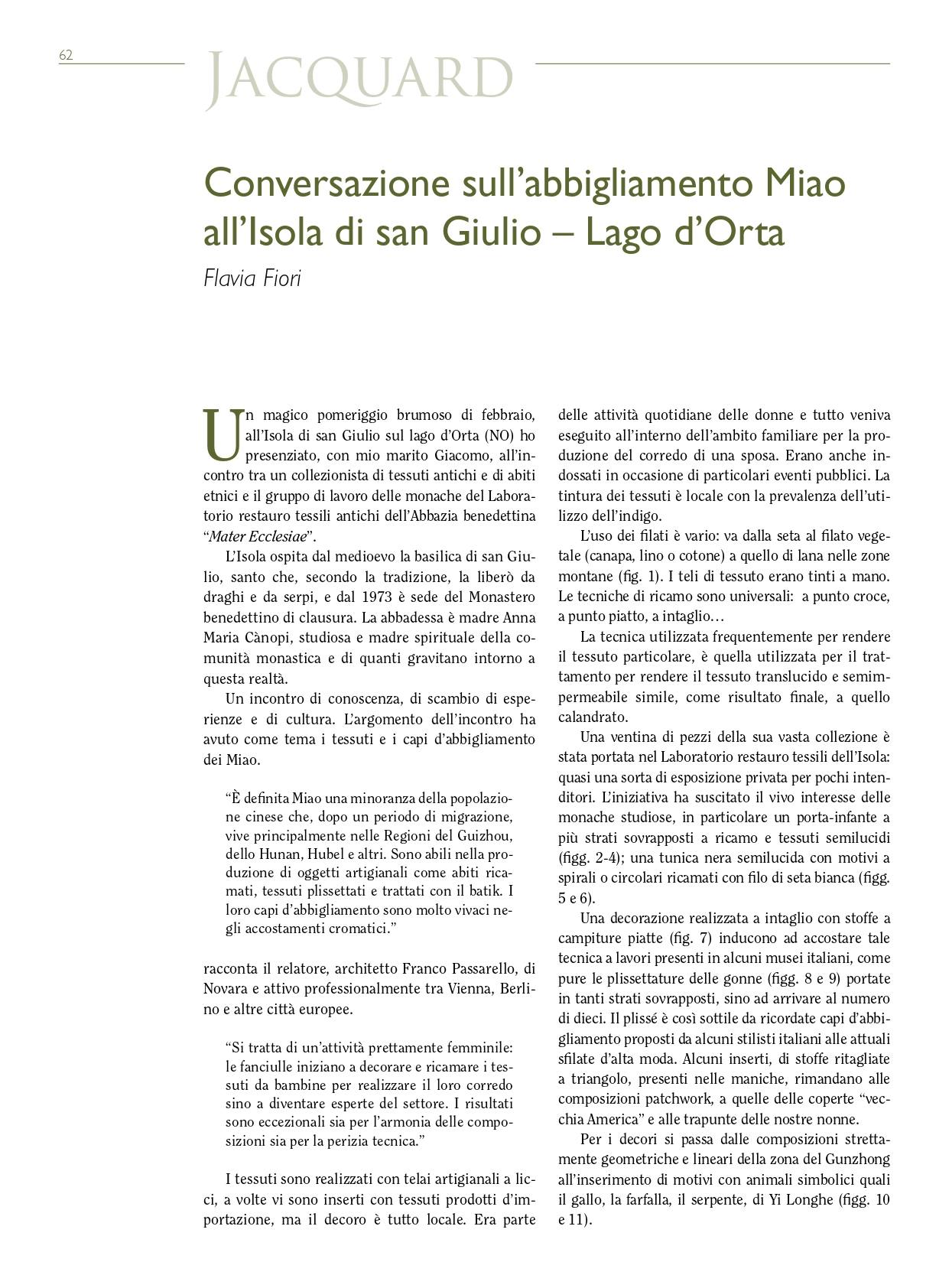
Conversation on San Giulio Island – Lake Orta: Miao Textiles and Clothing
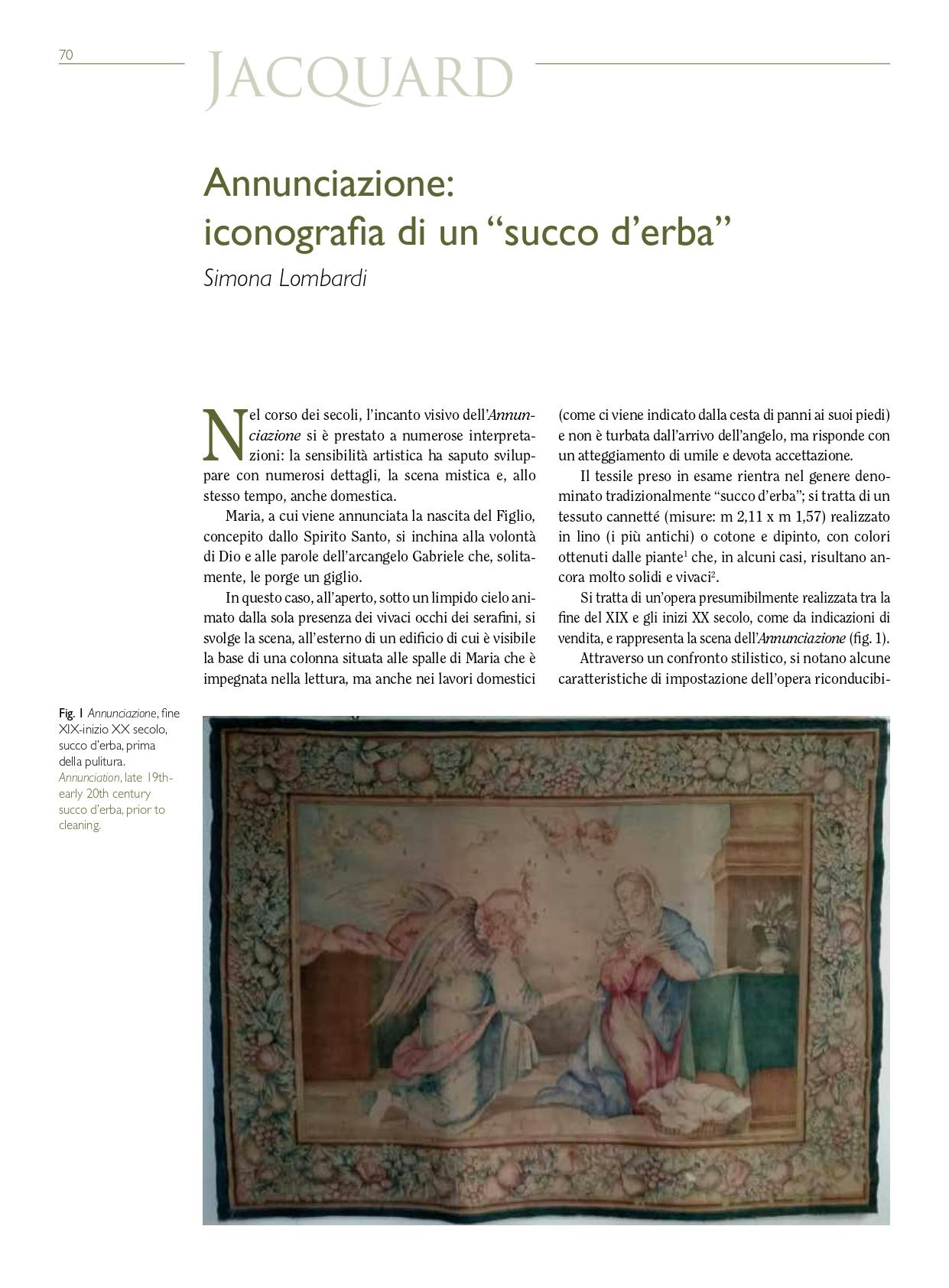
The Annunciation: Iconography of a ‘Succo d’Erba’
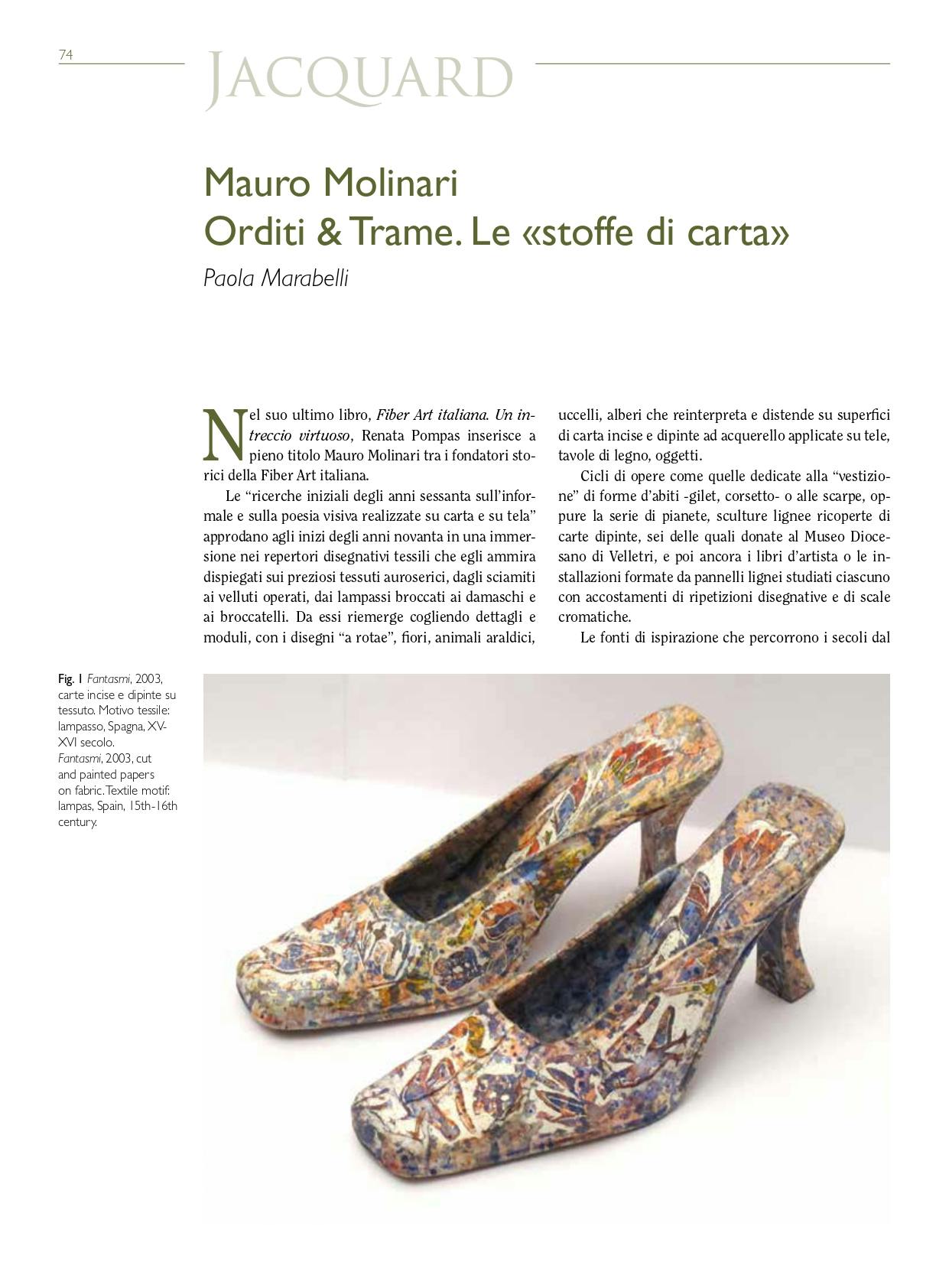
Mauro Molinari. Orditi & Trame. Warps & Wefts in ‘Paper Fabrics’
